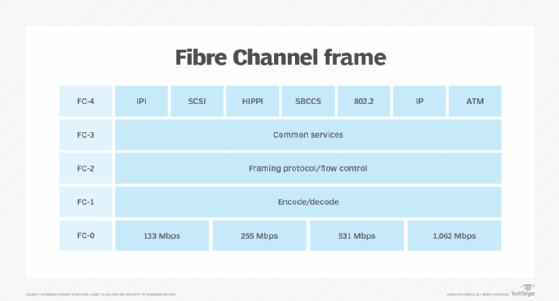N_Port ID virtualization (NPIV)
What is N_Port ID virtualization (NPIV)?
N_Port ID virtualization (NPIV) is a Fibre Channel (FC) standard that makes it possible to create multiple virtual ports on a single physical node port (N_Port), with each virtual port appearing as a unique entity to the FC network. The NPIV standard defines how multiple World Wide Port Names (WWPNs) can be assigned to a single physical port on a host bus adapter (HBA) or storage adapter in an FC-based storage area network (SAN).
Each physical entity in an FC network is assigned a World Wide Name (WWN) that is hardcoded into the device; this includes network adapters and their ports. When a WWN is assigned to an adapter, it is referred to as the World Wide Node Name (WWnN). When a WWN is assigned to a port, it is referred to as the WWPN. The WWN is either 64 bits or 128 bits and is similar to a network card's media access control (MAC) address.
For a SAN to recognize a device, its WWN must be registered with that network. The network uses the WWN to carry out port-to-port communications. However, the network does not rely on port WWNs alone. When a port logs onto the FC network, it uses the WWN to identify the port and then generates an FC identifier (FCID) -- a 24-bit ID that the SAN uses to route frames across the network.

In an FC network, or a non-NPIV network, a one-to-one relationship exists between the FCID and the physical port and its WWPN. However, NPIV makes it possible to assign multiple WWPNs to a port: one for each virtual port in addition to the one assigned to the physical port. So, the network adapters and FC switches must support NPIV to use the technology in a SAN.
As with physical ports, virtual port WWPNs are registered with the SAN. When a virtual port logs onto the network, the network assigns it a FCID, making it possible for the port to communicate with the network. From the perspective of the network, each virtual port looks like a physical port and is treated as such.
NPIV is not limited to virtual server environments, but that is where the technology is best applied. By assigning virtual ports to the virtual machines (VMs) on a host, each VM can access the SAN storage as though accessing it directly through the physical port. This allows features such as LUN zoning and LUN masking to be used to restrict access to specific data, thus preventing a VM from seeing any storage but its own. Without NPIV, all VMs on a host would be limited to the same WWPN and FCID, which means that all LUNs visible to the physical port would be visible to all VMs with no distinction between them.
See also: virtualize workloads with virtual SAN and virtual Fibre Channel, what to know for your virtualized storage selection process and how network consolidation and virtualization solve management issues.






